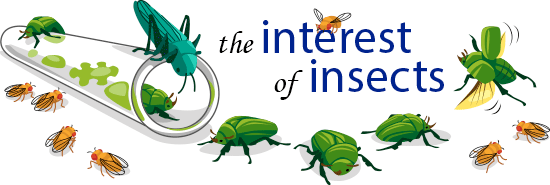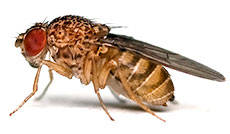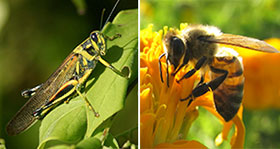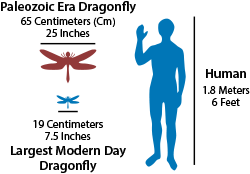
Illustrated by: Sabine Deviche

When you think about animals that are similar to humans, you may think about monkeys or apes, or perhaps another mammal. You probably don’t picture a fruit fly. You may think “what could we possibly have in common with a fruit fly?” Well, humans and insects have more in common than you might think. We share a broad range of similarities, covering everything from muscle and nerve structures to the ways our cells communicate.
Because the cells of insects and humans use many of the same processes, many important advances in medicine have come from the study of insects. Unfortunately, very few people recognize the importance of insects to humans and the Earth. Arizona State University professor Jon Harrison is one of these few. He conducts research in the field of insect ecological physiology. Using fruit flies, grasshoppers, bees, beetles, and more, he investigates how insects function, cope with environmental challenges, and evolve.
One interesting thing about insects is their ability to do things that humans can’t. Some insects can freeze solid, then thaw, and walk away just fine. They are also very good at surviving without oxygen. If humans don’t receive oxygen, they can die within a few minutes, but almost all insects can survive without oxygen for many hours.
How fruit flies survive without oxygen is an area of active research in the Harrison lab at ASU. Learning how fruit flies do this may help us develop the tools necessary to help treat premature babies and stroke patients.

The study of insects is also important as they are considered major pests. Swarms of locusts (migratory grasshoppers) have huge impacts on the world’s food supplies, and the disease-carrying mosquito remains the world’s most dangerous non-human animal.
While insects can be pests, they are also essential, as they pollinate many of our crops and are an important source of food for other wild animals. Because of this, we need a better understanding of how they cope or respond to environmental changes, such as various temperatures or levels of oxygen.
It is important to study the way insect’s bodies work today, but it is also helpful to research what they looked like in the past. In science fiction movies, you may see gigantic insects that can knock over buildings. But today, insects are so small, we can step on them.

Big bugs aren’t just a trick for movies; in the Earth’s deep past, insects were five to ten times larger than they are today. Along with other researchers, Harrison has been studying the possibility that higher oxygen levels in the distant past may have allowed insects to reach these big sizes.
Trying to make bigger bugs with higher levels of oxygen isn’t the only “mad scientist” project that interests Harrison and his team of researchers. They have also been involved in creating remote-controlled insects that may be able to collect information for use by the military. Harrison helped to create a system by which wires could be inserted into a beetle’s brain, allowing them to control its flight.
Though you may think of insects as tiny pests, Harrison’s work shows us that insect-based research can improve many areas of human medicine and technology. So the next time you try to shoo away a fruit fly or a beetle, think about how working with such tiny animals can bring us very big benefits.
Read more about: The Interest of Insects
Bibliographic details:
- Article: The Interest of Insects
- Author(s): James Waters, Karla Moeller
- Publisher: Arizona State University School of Life Sciences Ask A Biologist
- Site name: ASU - Ask A Biologist
- Date published: 25 May, 2012
- Date accessed: 22 August, 2025
- Link: https://askabiologist.asu.edu/explore/interest-insects
APA Style
James Waters, Karla Moeller. (Fri, 05/25/2012 - 13:33). The Interest of Insects. ASU - Ask A Biologist. Retrieved from https://askabiologist.asu.edu/explore/interest-insects
Chicago Manual of Style
James Waters, Karla Moeller. "The Interest of Insects". ASU - Ask A Biologist. 25 May 2012. https://askabiologist.asu.edu/explore/interest-insects
MLA 2017 Style
James Waters, Karla Moeller. "The Interest of Insects". ASU - Ask A Biologist. 25 May 2012. ASU - Ask A Biologist, Web. https://askabiologist.asu.edu/explore/interest-insects

Jon Harrison with one of his giant beetles.
Be Part of
Ask A Biologist
By volunteering, or simply sending us feedback on the site. Scientists, teachers, writers, illustrators, and translators are all important to the program. If you are interested in helping with the website we have a Volunteers page to get the process started.



